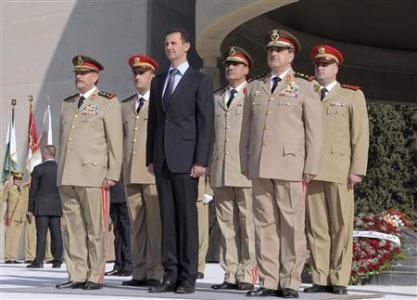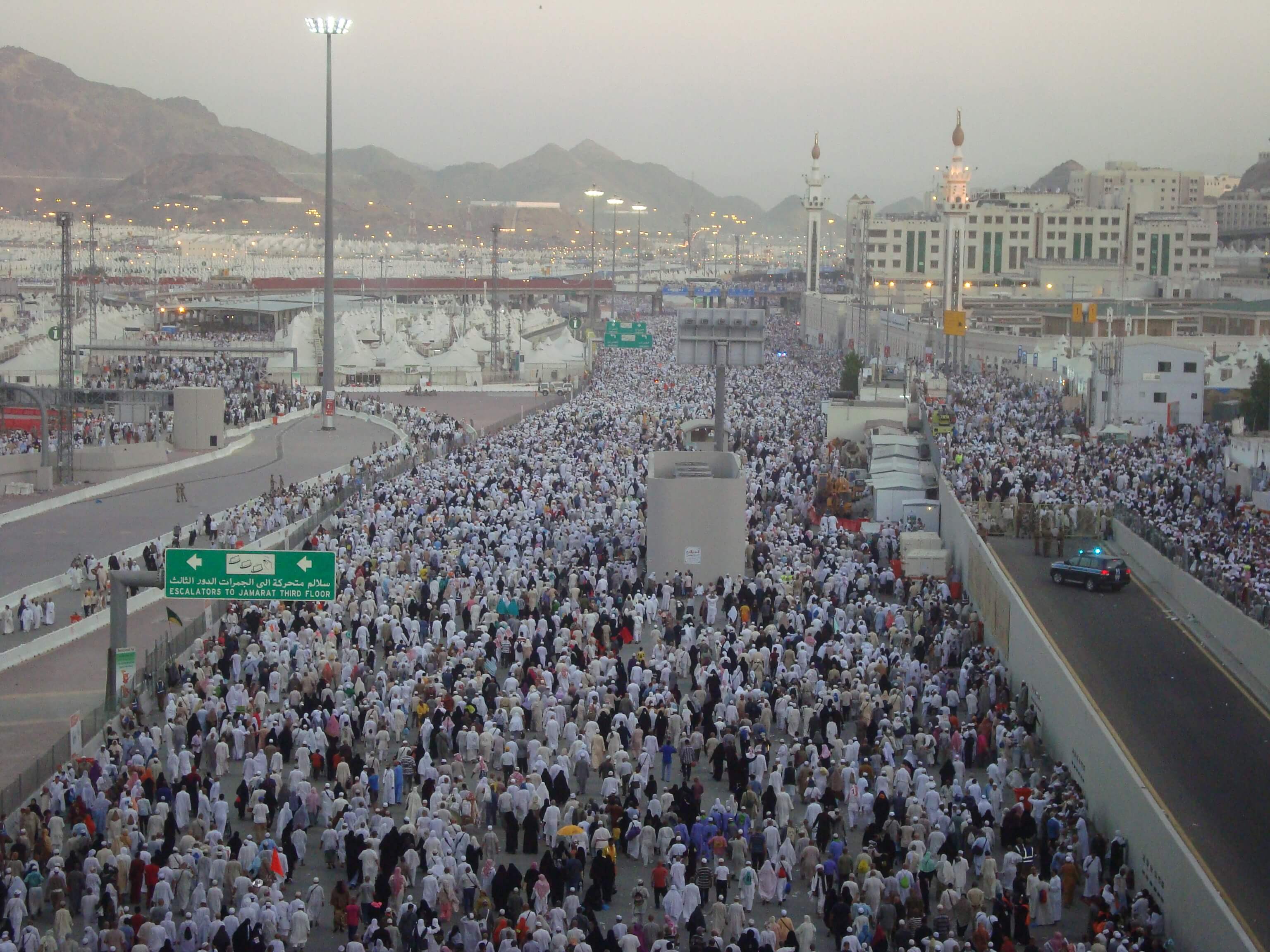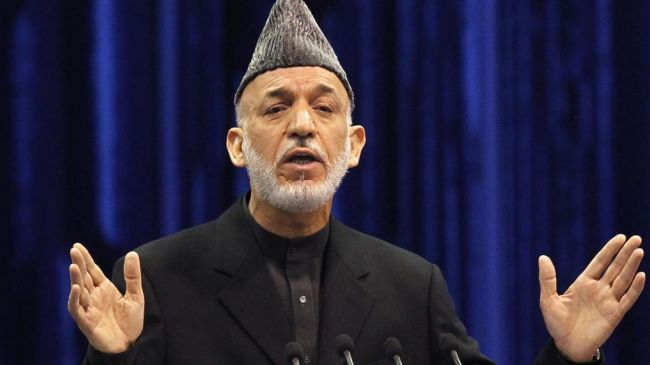The Ongoing Struggle in Damascus
After 18 months of an uprising against the regime of Bashar al-Assad the Syrian capital Damascus has now seen the most intense fighting to date. Reports are still murky, but it seems that fighting began four days ago in the southern neighborhood of Tadamon, and has spread from there. Two narratives have emerged regarding the way in which the latest round of hostilities arose. It seems that Air Force Intelligence, which has led the crackdown against the Free Syrian Army and peaceful protesters, attempted to dislodge rebels from the areas surrounding Damascus hours after an unusual press conference was held by the regime’s spokesman Jihad Makdissi, denying government responsibility for a massacre last week in Treimisah. The Free Syrian Army’s Central-Homs Joint Command stated that units started to conduct attacks on security stations and branches in the cities and the countryside across the country, including Damascus. Fighting has been accompanied by protests in adjoining areas both within the capital and its surrounding suburbs, with government snipers attacking demonstrators in the nearby Nahar Elisha neighborhood. Other areas of protest included the suburbs of Kisweh, Qudsaya. These acts of defiance have also included the blocking of two major roads in the capital that link Damascus with the city of Deraa in the south and the Jordanian capital of Amman. Fires were also lit to by protesters to block the way into the city’s international airport.
[captionpix align=”left” theme=”elegant” width=”320″ imgsrc=” http://news.bbcimg.co.uk/media/images/61595000/gif/_61595979_damascus_624x550.gif
” captiontext=”Areas of Damascus which have seen clashes over the past four days.”]
In addition to the fighting in Tadamon, clashes have taken place in and around Tishreen stadium, which according to Al Jazeera is being utilized as a base by activists, Zahera, and the area of Kafar Sousah. The fiercest hostilities have occurred in the mainly Sunni neighborhood of Midan, a crucial area given its proximity to a variety of key state security installations. Representatives of the Free Syrian Army (FSA) have stated that both Tadamon and Midan are now out of the control of the Assad regime, and that the push for the capital has begun. That being said, fighting is still several kilometers away from both the Presidential Palace and the country’s largest military airbase. Furthermore, in a statement by an FSA unit in the area of Midan, gunshots, a signal that complete control has yet to be achieved, can be heard. The regime for its part has also entered into this war of words, with its mouthpiece the al-Watan newspaper stating that “terrorist groups are seeking to launch the great Damascus battle” but that they would “never take the capital.”
The Regime Responds
[captionpix align=”left” theme=”elegant” width=”320″ imgsrc=” http://resources0.news.com.au/images/2012/07/18/1226428/670596-120718-tank.jpg
” captiontext=”Government tanks have been deployed across the capital.”]
In response to this surge in violence the regime has deployed tanks across the various roads into Damascus in order to ensure the containment of this uprising and impede any reinforcements from other parts of the country. Helicopters have been patrolling Damascus’ suburbs, highlighting an escalation of the conflict and the desperation of the regime. Reports are also surfacing that Tishreen stadium has been shelled by government forces in an attempt to dislodge fighters from this base of operations and that Tadamon is now surrounded by Assad’s snipers. Artillery attacks so close to the seat of power highlighted that the regime is in pitched battles with opposition fighters in and around the capital. This has amounted to what activists have labeled the “biggest military deployment” in the Damascus since the beginning of the uprising. This has included the first use of armored personnel carriers in the Midan district, which reportedly witnessed an intense ambush against a bus carrying feared Shabiha militia men. With the International Committee of the Red Cross recently labelling the Syrian situation as a “non-international armed conflict”, the technical term for a civil war, the terms of the Geneva Convention now apply to all belligerents. According to Josh Lockman, international law professor at the University of Southern California, “With this application of international humanitarian law to the conflict, key regime officials could be held responsible for both massacres against civilians and also for the treatment of captured combatants.” These issues are sure to arise with this latest round of clashes in the capital, but with a hardened international stance against Assad and the possibility of persecution by the International Criminal Court now more likely, it seems as if key regime officials may not opt for a mediated settlement of this crisis—ensuring that only violence will end the crisis.
A Pre-emptive Strike or the “Damascus Volcano”?
The timing of the government’s operation against FSA units in and around Damascus comes at a crucial period amid reports that Syrian rebels were preparing to take the capital. The Telegraph reported last month that a delegation which included a senior figure in the Free Syrian Army participated in high level meetings with the US Ambassador to Syria, the Special Coordinator for the Middle East and the National Security Council. The FSA representatives compiled what The Telegraph described as a “targeted list” of heavy weaponry, which they attempted to sequester from the US, which included anti-tank missiles and heavy machine guns. The same report detailed that Western powers had drawn up a final contingency plane for arming the rebels with anti-tank and anti-aircraft weaponry in anticipation of the complete failure of the Anan Plan and the meeting of the Syrian contact group in Geneva on June 30th. This included a stockpiling of the above mentioned weaponry, which was to be supplied by Libya with financing coming for by both Qatar and Saudi Arabia. In combination with reports that the CIA is helping to direct weapons into the hands of palatable Free Syrian Army units (those that do not espouse radical Islam or threaten the West) it seems as if steps are being taken towards a Syrian end game.
[captionpix align=”left” theme=”elegant” width=”320″ imgsrc=” http://cache.daylife.com/imageserve/0bYzdKy7hB7Gl/610x.jpg
” captiontext=”Rebels faceoff against government troops in the Midan district of Damascus.”]
Further confirming these plans, an Arabic news outlet, Asharq Alawsat, posted an interview with Riad al-Assad entitled “Free Syrian Army Preparing for ‘Final Battle’ for Damascus” on July 13th. In the detailed article, the commander revealed that “preparations for the battle of Damascus are underway and are in full swing, particularly as this operation—which will be the final and decisive confrontation with the regime…” According to Riad al-Assad, the operation had been postponed by a lack of weaponry, an issue that was being remedied through the FSA’s seizure of government stockpiles and the acquisition of weapons from abroad. The interview outlined that the goal of this operation would not be to take the Presidential Palace but rather to “capture the military units that surround the palace, including the Fourth Armored Division, and the Republican Guard.” Both of these army units are comprised of Alawites and form the regime’s Praetorian Guard, which are led by Bashar’s brother Maher Assad, known for his ruthlessness in cracking down against rebels and civilians alike. In routing these defenders, Riad had hoped to “have a positive impact on the pace of defections…after everybody becomes aware that the regime is facing its end.” These plans were confirmed by Syrian National Council member Bashar al-Haraki who told Asharq Alawsat that the decisive battle for Damascus was fast approaching.
While events over the last two days seem to indicate that the “Damascus Volcano”, the operational label for these attacks, is upon us, it appears as if the regime initiated this standoff pre-emptively in order to route rebel forces in and around the capital before they could be fully armed and reinforced. Although Riad al-Asaad’s twitter account has triumphantly called the latest round of violence as “Damascusgrad,” echoing the beginning of the Soviet Union’s triumph over Nazi Germany, it seems that Syria’s rebels are as underprepared as Russian troops in 1942.
A Lack of Weapons and Reinforcements
Again, it must be noted that details are currently hazy in Damascus and that the battle is constantly shifting. According to the New York Times the regime has deployed tanks in an attempt to surround rebel forces in hostile neighborhoods, and it seems as if fighting has abetted in some areas. The BBC has reported that these clashes have extended into downtown Damascus and the regime is systematically barraging the Midan neighbourhood. Al Jazeera is also reporting that the “al-Midan Brigade” has taken the central square in Midan, a strategic accomplishment for the FSA. These conflicting reports highlight the volatility of the ongoing struggle in Syria’s capital. What is clear though is that the remaining rebel units are thus stranded in unfriendly territory without the prospect of being reinforced by units from Aleppo, Homs, Hama, and other areas which currently have their hands full. The simple fact is that the regime, having learned of an imminent attack on the capital, decided to act pre-emptively in order to squash FSA units before they could amass and attain the weaponry necessary to defeat the elite units. Their commander Riad al-Asaad made it clear in his interview that the rebels have not yet obtained the surface to air missiles necessary to strike a decisive blow to regime helicopters which have become a deadly tool in supressing rebel advances. (There are now unconfirmed reports that rebels in Damascus have shot down two Hind attack helicopters, but it remains to be seen if these weapons have been employed on a large and decisive scale and activists have denied these claims.) Furthermore, while the FSA has proven that it can utilize Improvised Explosive Devices with deadly accuracy against Assad’s armour, it has yet to obtain the necessary weapons that would be necessary in urban fighting against tanks and personnel carriers.
While this may be changing, with evidence of anti-armour weapons used against regime tanks near the Turkish-Syrian border, as shown here, there has not been any concrete reports that these weapons have made their way into the hands of rebels in the capital. For the most part it seems that rebels are utilizing the same weaponry against Assad’s forces, as noted from videos from Midan and Tadamon, that have been the mainstay of rebel operations: AK 47s and RPGs. While the destruction of Bashar al-Assad’s regime is near, with high level defections, an emboldened and highly effective rebel force inching closer, and an international community determined to see its end, the current violence in Damascus is not the final chapter. To defeat Assad and his highly trained loyal units the FSA will first need the appropriate anti-tank and anti-air weaponry, not to mention freedom of mobility in order to launch a full-fledged attack on the capital. Assad’s pre-emptive moves against FSA units have ensured that a rebel victory will not come to fruition as a result of this latest incursion. That being said, it is only a matter of time.
Bombing in Damascus: A Game Changer
Although it seems doubtful that the latest round of violence will result in the immediate crumbling of the Assad regime, this incursion into the heart of the capital will have immense repercussions. Particularly with Wednesday morning’s suicide or remote control (details not clear) bombing at the National Security headquarters, the government institution leading the regime’s crackdown. For the regime the death of some of the most important figures in the Assad’s security apparatus including Defence Minister Daoud Rajiha, Deputy Defence Minister Assef Shawkat (the regime’s second most feared man after Assad’s brother Maher), Assistant Vice Presidnet and Chief of Crisis Operations General Hassan Turkmani, and Interior Minister Mohamad Ibrahim al-Shaar presents a critical blow.
[captionpix align=”left” theme=”elegant” width=”320″ imgsrc=” https://encrypted-tbn3.google.com/images?q=tbn:ANd9GcTfi7V9IfFMBoozntP8MzCIyOXfpyMPTXrzvbrip5j4cPcuyK040w
” captiontext=””]
Such an attack at the heart of Assad’s inner circle is a development that will cause huge problems for the regime. This can already been seen in the international sphere as the UN Security Council postpones its vote on an American and British backed draft resolution until Thursday. The West is waiting to see how far the rebels advance in Damascus while Russia and China are rethinking their support, particularly after the former has been wavering in recent weeks. On the domestic front, the regime now looks weak and vulnerable to attacks by rebels–it is no longer a matter of guerilla tactics in the country’s hinterland but of well-planned operations against crucial high ranking members. Furthermore, given the fact that the bomb was planted or detonated by someone with access to Assad’s inner circle, with reports that it was one of the attendees’ bodyguards, paranoia will undoubtedly ensue among the existing leadership. This is particularly important given reports that with the defection of Manaf Tlass, the former head of the Republican Guard and close confident of Assad, the inner circle of the regime had stepped up its monitoring of Sunnis close to Assad. At the military level, now that the heads of multiple security apparatuses are dead, their replacements will have to quickly take hold of the situation and attempt to build up troop morale in a short period of time as fighting rages on for a fourth straight day. Among these units, the “sinking ship” dynamic will take hold: high ranking officials defecting or fleeing, with news of the 20th Brigadier General fleeing to Turkey today, and rank-and-file Sunni fence-sitters switching sides as the regime’s end seems imminent.
In addition to the bomb attack rebels laid siege a state facility that doubled as the headquarters for the Shabiha, and laid siege to army barracks housing the elite unit of the Fourth Armored Division near the Presidential Palace. It is now said that rebels are bringing reinforcements to the capital, and videos have appeared of a large convoy making its way to the city. A total of 3,000 FSA troops are reportedly converging, ensuring that these demoralized units will have to keep up the fight if they are to postpone the inevitable. Whether the bombing against government officials or the increase in assaults on Syrian Army troops and installations will be the decisive end of the Assad regime, it is clear that it marks a crucial step towards the overthrow of another dictator in the Arab world.




